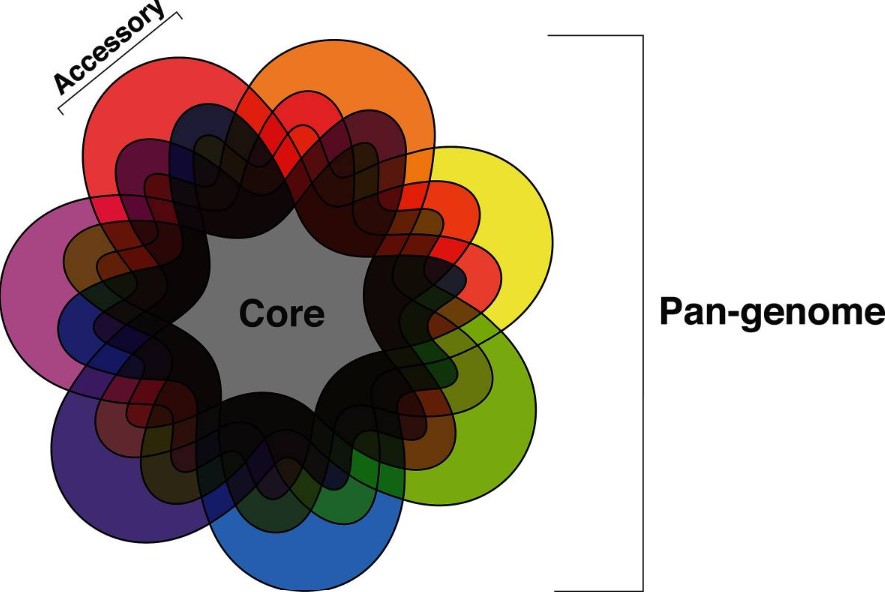Pan-genome Analysis of Fungal
With the continuous development of gene sequencing technology, more and more fungi have completed whole genome code-breaking. In the fungal evolution process, each species has developed unique genetic traits due to natural and anthropogenic selection and other influences. Therefore, a single genome is far from covering all genetic sequences of the entire species. Fungal pan-genome refers to the core genome that exists in almost all individuals of a fungal species and the variable genome that exists in only some individuals. Lifeasible can use fungal pan-genome analysis to obtain more accurate and comprehensive variation information, analyze fungal strain evolution, adaptation, and community structure, and screen for functional genes or functional sequences in variable genomes.
 Figure 1. Venn diagram of the pan-genome. (McCarthy CGP et al., 2019)
Figure 1. Venn diagram of the pan-genome. (McCarthy CGP et al., 2019)
- Fungal pan-genome construction.
We provide two fungal pan-genome construction methods, iterative assembly-based pan-genome construction and ab initio assembly-based pan-genome construction, respectively. The fungal pan-genome construction method based on iterative assembly is to update the reference genome directly by comparing the sequencing data with the reference fungal genome. The obtained extended genome is the pan-genome of the strain. The fungal pan-genome construction method based on ab initio assembly is a pan-genome merged by comparing different individual genomes of the same strain with each other and removing redundant sequences according to the determined core genome sequence and variable genome sequence.
- Analysis of structural variation in fungal pan-genomes.
The main type of variation in the non-core genes of the fungal pan-genome is structural variation. Understanding structural variation in plants is essential for understanding the gene population available in plants and its use in plant resistance and disease control. We can analyze fungal pan-genomic structural variation by analyzing transposon movement and fungal genome rearrangements.
- Functional gene localization analysis of fungal populations.
Currently, the main method for population genomics studies is resequencing. Still, resequencing relies on short sequence alignment, which can result in missing information on genetic variation in highly polypeptide genomic regions. Pan-genomic analysis performs deep sequencing and de novo assembly of different individuals of the same species. We can combine fungal pan-genome analysis with population genomics to help our clients reveal genomic variation and function more accurately.
Lifeasible can provide fungal pan-genome analysis to help customers investigate the important role of variable genes in the pathogenicity of plant pathogenic fungi and address questions related to plant-pathogenic fungal coevolution through pan-genome studies. As your trusted partner, we can meet your fungal phylogenetic analysis needs and provide you with efficient, high-quality services. If you want to know the details, please contact us.
Reference
- McCarthy CGP, Fitzpatrick DA. (2019). "Pan-genome analyses of model fungal species." Microb Genom. 5(2): e000243.
For research or industrial raw materials, not for personal medical use!
 Figure 1. Venn diagram of the pan-genome. (McCarthy CGP et al., 2019)
Figure 1. Venn diagram of the pan-genome. (McCarthy CGP et al., 2019)